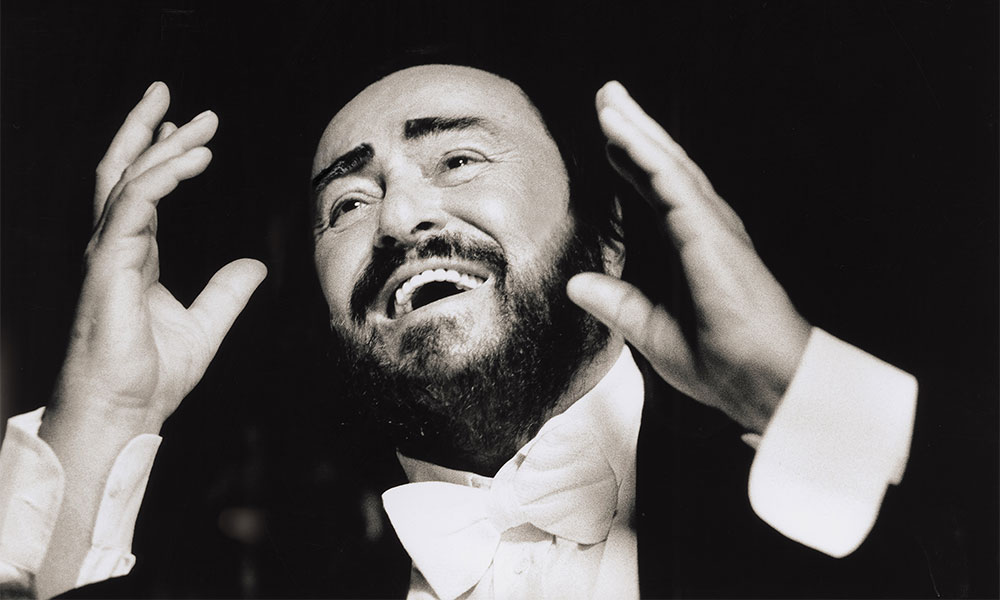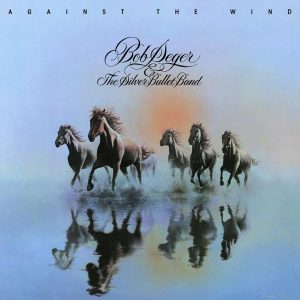Who are the greatest tenors of all time? Trying to pin down any Top Ten list is bound to cause disagreement – and so it should – but we’ve discussed and debated and compiled our selection of the greatest tenors. Scroll down to discover our list of the best tenors, including Luciano Pavarotti, Plácido Domingo, and Enrico Caruso.
Listen to the Best of Pavarotti on Apple Music and Spotify.
Enrico Caruso (1873-1921)
This Italian tenor Enrico Caruso was the first star of the gramophone and the first recording artist to sell a million copies. It’s no surprise. His sensational voice, impressive power, and art-meets-heart artistry are still a benchmark for all subsequent tenors. He premiered roles for all the major composers of his day, including Puccini. He was also fond of practical jokes, and, as the story goes, once slipped a hot sausage into the palm of diva-ish soprano Nellie Melba during the aria ‘Che gelida manina’ (‘Your tiny hand is frozen’) in La Bohème. She didn’t find it funny.
Lauritz Melchior (1890-1973)
The Danish singer Lauritz Melchior was a tenor who began his career as a baritone, but as soon as he retrained as a tenor, he skipped over the middling-heavy roles and instantly became the most admired Heldentenor (the kind of power-blasting tenor who can sing Wagner) of the last century. His voice had a dark resonance with clarion top notes and – best of all – was unbelievably huge and tireless. His career was at its peak between the 1920s and 1940s, but he was still singing successfully until his 70th birthday. He also had a great sense of fun, and appeared in five Hollywood musicals.
Beniamino Gigli (1890-1957)
Upon the death of Enrico Caruso in 1921, Beniamino Gigli was hailed as his obvious successor, and he excelled in many of the same roles at the Metropolitan Opera in New York. His beautifully sweet voice was smaller than Caruso’s, but had a similar ‘spin’ which allowed it to ring out into an auditorium with thrilling power. (He understandably disliked the term ‘Caruso Secondo,’ preferring the moniker ‘Gigli Primo’). He made over 20 films, and continued to sing into his sixties.
Jussi Björling (1911-60)
Pavarotti once said that he admired the voice of Swedish tenor Jussi Björling more than any other, and modeled his performances on Björling’s recordings. It’s not hard to see why. Björling’s sound was pure and clear, and swelled out magically the higher and louder it rose. He sang mainly lyric roles (these are roles which are not too heavy, and not too fast) such as Rodolfo (La Bohème), Roméo (Roméo et Juliette), and Gounod’s Faust, and made them his own. His life was cut tragically short by alcoholism.
Nicolai Gedda (1925 – 2017)
Swedish tenor Nicolai Gedda was the pre-eminent Mozart singer of the last century, famed for his beautifully polished and even sound, his exquisite phrasing, and his musical intelligence. After he auditioned for the famous record producer Walter Legge in 1948, Legge made him the unofficial ‘house tenor’ of EMI, and he recorded hundreds of discs for the company, including some heavier roles that were not ideally suited to him. Fluent in Swedish, Russian, German, French, English, Italian, Spanish, and Latin he sang operas and recitals comfortably in all of these tongues. He was still recording roles at the age of 78.
Jon Vickers (1926 – 2015)
The Canadian tenor Jon Vickers was blessed not only with a huge voice and thrilling sound but with great acting skills too, and his performances as Tristan have become the stuff of legend. He also became firmly associated with the difficult role of Aeneas in Berlioz’s Les Troyens (The Trojans) when the opera was finally given a full staging 1957. His Peter Grimes is still the benchmark for performers today. Because his career flourished during the golden age of stereo recording, many of his most famous roles are on disc, and they are still highly prized.
Luciano Pavarotti (1935-2007)
With his instantly recognisable silvery tone, easy top notes and vocal agility, Luciano Pavarotti was an ideal candidate for lighter roles and he became the most commercially successful tenor of the 20th century. With canny management, he also became a household name outside the realms of opera, and his ‘Three Tenors’ concert with Plácido Domingo and José Carreras was one of the most significant phenomena in recent classical music history. Alas, his ongoing battle with his waistline did nothing to dispel the preconception that all opera singers are overweight.
Plácido Domingo (b.1941)
Plácido Domingo is the most versatile tenor, with the longest and most wide-ranging career in history. He started as a baritone in operetta, moved up to sing light tenor parts, then heavier roles, and then even added Wagner to his repertoire. He now sings major baritone roles again, conducts operas, and administrates an opera company. He’s also a star in lighter music and crossover. A phenomenon, and a legend in his own lifetime.
Jonas Kaufmann (b.1969)
Combining the holy trinity of brooding good looks, charismatic stage presence and a powerful and versatile voice, German tenor Jonas Kaufmann seems to be the prince-in-waiting to Domingo’s Superman. He is superb in Italian opera, the almost baritonal heft to his voice means he is also outstanding in Wagner, and has been described as “the most important, versatile tenor of his generation” by The New York Times.
Juan Diego Flórez (b.1973)
There has never been a recorded tenor with such a secure high sound, glistening timbre or fearsome talent for rat-a-tat coloratura as the Peruvian tenor Juan Diego Flórez. These gifts have even had an effect on lyric repertoire, and now operas that were previously considered too difficult to sing have come back onto stages again. It hasn’t hurt his career that he’s slim and pleasingly photogenic.




